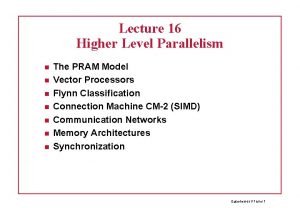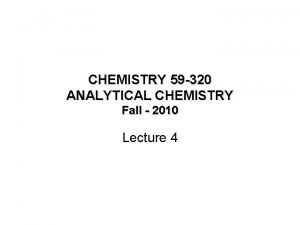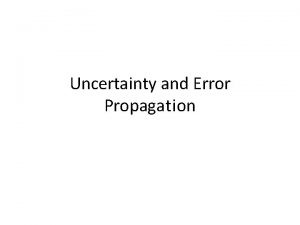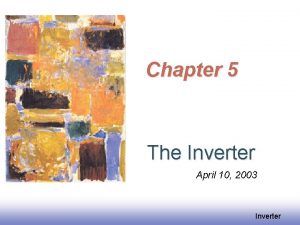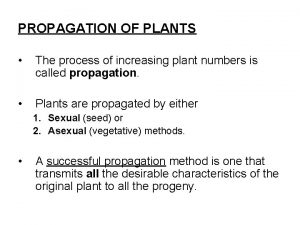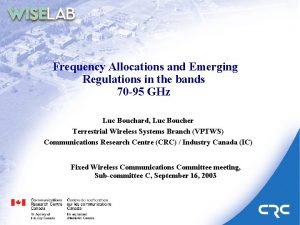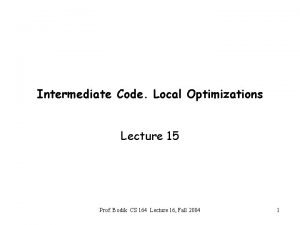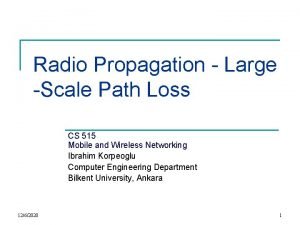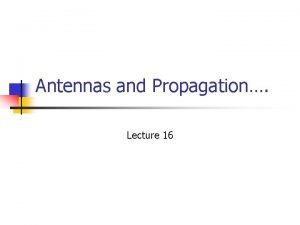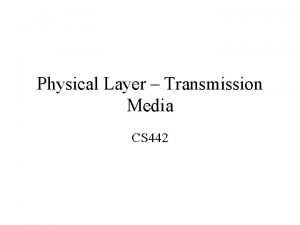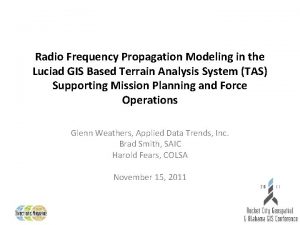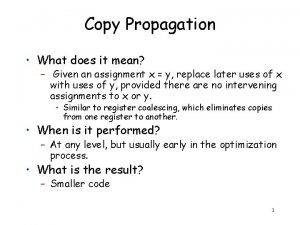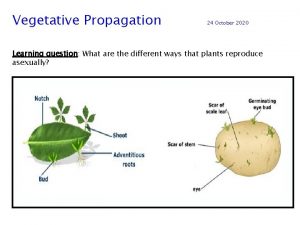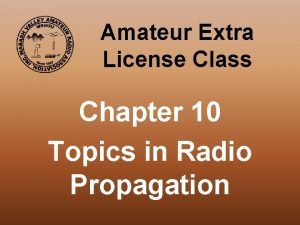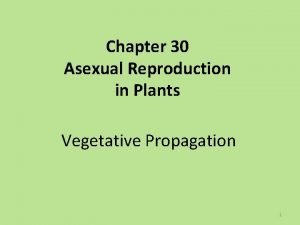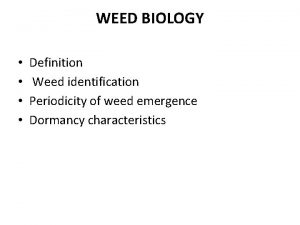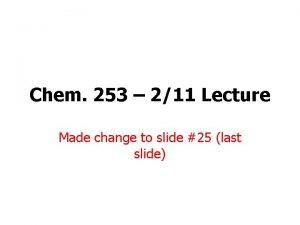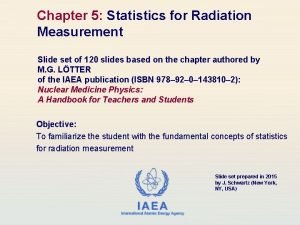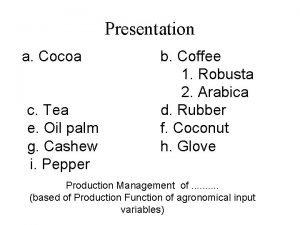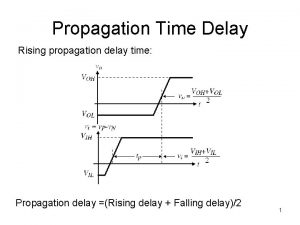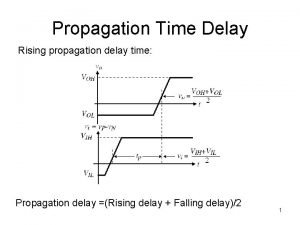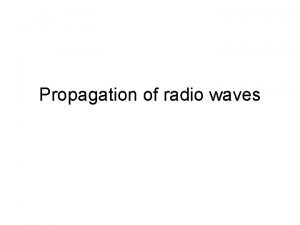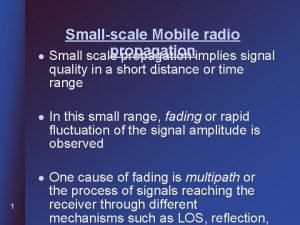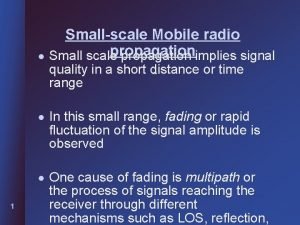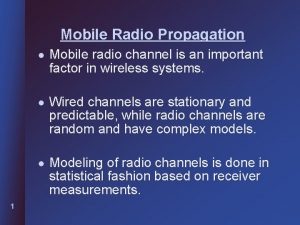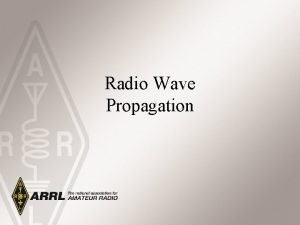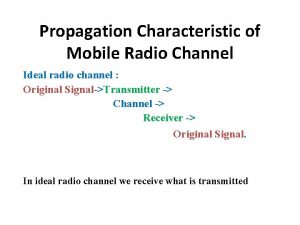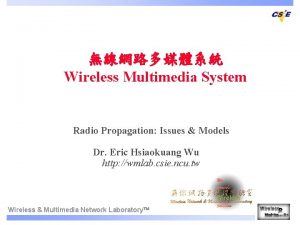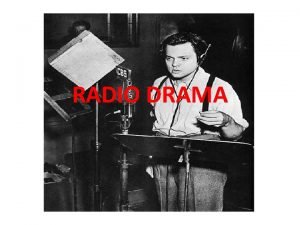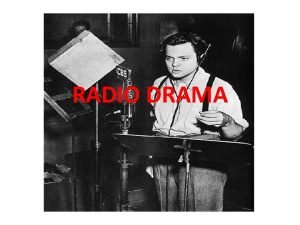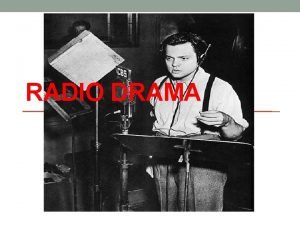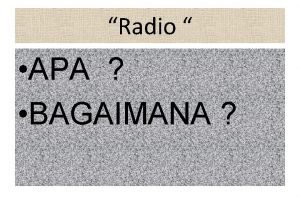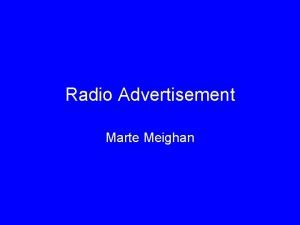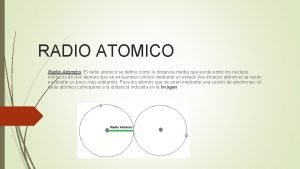Practical Radio Propagation Models Radio Propagation Models T






















![Path Loss Exponent and Standard Deviation Measured in Home/Factory (OBS)Buildings [Anderson et al. 94] Path Loss Exponent and Standard Deviation Measured in Home/Factory (OBS)Buildings [Anderson et al. 94]](https://slidetodoc.com/presentation_image/367a7875942ca2adf6e938d343807e61/image-23.jpg)





![Free-space plus linear Path Attenuation Model [Devasirvathan et al, 90] - Attenuation constant for Free-space plus linear Path Attenuation Model [Devasirvathan et al, 90] - Attenuation constant for](https://slidetodoc.com/presentation_image/367a7875942ca2adf6e938d343807e61/image-29.jpg)
![Free Space Plus Linear Path Attenuation Model parameters [Devasirvathan et al, 90] Location Building Free Space Plus Linear Path Attenuation Model parameters [Devasirvathan et al, 90] Location Building](https://slidetodoc.com/presentation_image/367a7875942ca2adf6e938d343807e61/image-30.jpg)
- Slides: 30

Practical Radio Propagation Models

Radio Propagation Models T R d 0 d

Radio propagation model equations § Log-distance path model Average received power Average path loss § Log-normal shadowing model

Outdoor Propagation Models § Okumura’s Model • Most widely used models for signal prediction in urban areas • Applicable in frequency range of 150 MHz-1920 MHz and distances of 1 km – 100 km • Base station heights of 30 m – 1000 m

Okumura Model equations - Median value of propagation path loss - Free space propagation loss - Median attenuation relative to free-space - Base station antenna height gain factor - Mobile antenna height gain factor - Gain due to type of environment

Free space propagation loss LF § LF = -10 log [ l 2/ (4 pd)2] • • • Wavelength l, m = 3 x 108/f Frequency f, Hz d = Transmitter-receiver distance, m

Gain factor calculations

100 70 Urban Area ht = 200 m hr = 3 m 60 50 40 d (km) Median Attenuation, A(f, d) (d. B) Median attenuation relative to free space (Amu(f, d)), over a quasismooth terrain [ from Oku 68 © IEEE] 80 70 60 50 40 30 20 10 5 2 1 30 20 10 70 100 200300 500 1000 2000 3000 700 Frequency f (MHz)

Correction Factor , GAREA (d. B) Correction factor, GAREA, for different types of terrain [ from Oku 68 ©IEEE] 35 30 Open Area 25 20 Quasi Open Area 15 Suburban Area 10 5 0 100 200 300 500 1000 700 Frequency f (MHz) 2000 3000

Hata Model for different terrains |

Hata Model parameters - Frequency in MHz from 150 MHz - 1500 MHz - Effective transmitter ( base station) antenna height (in meters) ( 30 m – 200 m) - Effective receiver ( mobile) antenna height (in meters) ( 1 m – 10 m) - T-R separation distance in km - Correction factor for effective mobile height

Correction factor § Small City § Large City

PCS Extension to Hata Model § Extension of Hata Model to GHz § Developed by EURO-COST ( European Cooperative for Scientific & Tech. Research)

PCS Extension to Hata Model limits § Model valid for following range of parameters

Indoor Propagation Models § PCS (Personal Communication System) requires good models for propagation inside buildings § Indoor radio channel differs from outdoor models • Distances covered are much smaller • Variability of channel is much greater for a much smaller T-R separation distance § Indoor channels may be classified as either Line-of-sight (LOS) or Obstructed (OBS)

Log-distance indoor model § Log-normal power law where n, s depend on surrounding & building type

Log-distance indoor model- Example Given the following measurements: Pr (1 m) = 0 d. Bm Pr (2 m) = -20 d. Bm Pr (5 m) = -30 d. Bm Pr (10 m) = -40 d. Bm Determine the value of n and s using logdistance model

Log-distance indoor model- Solution Step 1: Predicted vlaues Using Pr’(d) = Pr(d 0) – 10 nlog(d/d 0) Pr’(1) = 0 d. Bm – 10 nlog(1/1) = 0 Pr’ (2 m) = 0 d. Bm – 10 nlog(2/1)=-3 n Pr (5 m) = 0 d. Bm – 10 nlog(5/1)=-7 n Pr (10 m)=0 d. Bm– 10 nlog(10/1)=-10 n

Log-distance indoor model- Solution Step 2: Mean squared error E between measured and predicted values E= (0 -0)2 + (-20+3 n)2+(-30+7 n)2+(-40+10 n)2 Step 3: Minimization of error E d. E/dn = 0 => 2 x 3 x (-20+3 n) +2 x 7 x (-30+7 n) +2 x 10 x (-40 +10 n) = 0 => 158 n = 670 => n = 4. 24

Log-distance indoor model- Solution Step 4: Calculation of standard deviation s s 2 = E/Number of measurements =[(0 -0)2 + (-20+3 n)2+(-30+7 n)2+(-40+10 n)2]/4 Putting n = 4. 24 s 2 = 14. 72 => s = 3. 83

Path Loss Exponent and Standard Deviation Measured in Commericial/Office Buildings [Anderson et al. , 94] Building Frequency (MHz) n Retail Stores Grocery Store 914 2. 2 1. 8 8. 7 5. 2 Office, hard partition Office, soft partition 1500 3. 0 7. 0 900 2. 4 9. 6 1900 2. 6 14. 1 s(db)

Path Loss Exponent and Standard Deviation Measured in Factory (LOS) Buildings [Anderson et al. , 94] Building Frequency (MHz) n 1300 2. 0 3. 0 4000 2. 1 7. 0 1300 1. 8 1. 6 6. 0 5. 8 s(db) Factory LOS Textile/Chemic al Paper/Cereals Metalworking
![Path Loss Exponent and Standard Deviation Measured in HomeFactory OBSBuildings Anderson et al 94 Path Loss Exponent and Standard Deviation Measured in Home/Factory (OBS)Buildings [Anderson et al. 94]](https://slidetodoc.com/presentation_image/367a7875942ca2adf6e938d343807e61/image-23.jpg)
Path Loss Exponent and Standard Deviation Measured in Home/Factory (OBS)Buildings [Anderson et al. 94] Building Frequency (MHz) n Indoor to Street Factory OBS 900 3. 0 7. 0 Textile/Chemic al Metalworking 4000 2. 1 9. 7 1300 3. 3 6. 8 s(db) Suburban Home

Seidel Model – Same floor measurements • In-building site-specific propagation model • Reduces the standard deviation (s) between measured and predicted path loss to around 4 d. B, as compared to 13 d. B when only a log-distance model was used • n. SF = ‘same floor’ measurement exponent • FAF = Floor attenuation factor for a specified number of building floors

Seidel Model – Multi floor measurements • When measurments are made across different floors, then model is modified: • n. MF = ‘multifloor’ measurement exponent • PAF = Partition attenuation factor

Path Loss Exponent and Standard Deviation Measured for All Buildings [Seidel et al. , 1992] n s (db) Number of locations 3. 14 2. 76 16. 3 12. 9 634 501 Through One Floor 4. 19 5. 1 73 Through Two Floors 5. 04 6. 5 30 Through Three Floors 5. 22 6. 7 30 Grocery Store 1. 81 5. 2 89 All Buildings All locations Same Floor

Path Loss Exponent and Standard Deviation Measured for Office Building 1 [Seidel et al. , 1992] n s (db) Number of locations 3. 54 3. 27 12. 8 11. 2 320 2. 38 West Wing 5 th Floor 2. 68 8. 1 104 Central Wing 5 th Floor 4. 01 4. 3 118 West Wing 4 th Floor 3. 18 4. 4 120 Office Building 1: Entire Building Same Floor

Path Loss Exponent and Standard Deviation Measured for Office Building 2 [Seidel et al. , 1992] n s (db) Number of locations 4. 33 3. 25 13. 3 5. 2 100 37 Office Building 2: Entire Building Same Floor
![Freespace plus linear Path Attenuation Model Devasirvathan et al 90 Attenuation constant for Free-space plus linear Path Attenuation Model [Devasirvathan et al, 90] - Attenuation constant for](https://slidetodoc.com/presentation_image/367a7875942ca2adf6e938d343807e61/image-29.jpg)
Free-space plus linear Path Attenuation Model [Devasirvathan et al, 90] - Attenuation constant for channel (d. B/n) FAF- Floor attentuation factor PAF- Partition attentuation factor
![Free Space Plus Linear Path Attenuation Model parameters Devasirvathan et al 90 Location Building Free Space Plus Linear Path Attenuation Model parameters [Devasirvathan et al, 90] Location Building](https://slidetodoc.com/presentation_image/367a7875942ca2adf6e938d343807e61/image-30.jpg)
Free Space Plus Linear Path Attenuation Model parameters [Devasirvathan et al, 90] Location Building 1: 4 story Building 2: 2 story Frequency a —Attenuation 850 MHz (d. B/m) 0. 62 1. 7 GHz 4. 0 GHz 0. 57 0. 47 850 MHz 0. 48 1. 7 GHz 4. 0 GHz 0. 35 0. 23
 Pipelineing
Pipelineing Awin radio
Awin radio Difference between models and semi modals
Difference between models and semi modals Error propagation quotient
Error propagation quotient Gaussian error propagation
Gaussian error propagation Propagation delay formula
Propagation delay formula Advantages of plant propagation
Advantages of plant propagation Rf propagation
Rf propagation Dahlia asexual reproduction
Dahlia asexual reproduction Fragmentation asexual reproduction examples
Fragmentation asexual reproduction examples Trench layering
Trench layering Copy propagation in compiler design
Copy propagation in compiler design 515
515 Antenna gain formula examples
Antenna gain formula examples Atis sexually or asexually
Atis sexually or asexually Cs 442
Cs 442 Rf propagation modeling software
Rf propagation modeling software Objectives of plant propagation
Objectives of plant propagation Copy propagation in compiler design
Copy propagation in compiler design Examples of vegetative propagation
Examples of vegetative propagation Error propagation equation
Error propagation equation Chordal hop propagation
Chordal hop propagation Layerage
Layerage Bulbs
Bulbs Rectilinear propagation of light
Rectilinear propagation of light Disadvantages of vegetative propagation
Disadvantages of vegetative propagation Propagation chemistry
Propagation chemistry Uncertainty in multiplication
Uncertainty in multiplication Error propagation quotient
Error propagation quotient Vegetative propagation of tea
Vegetative propagation of tea Mean absolute error
Mean absolute error
